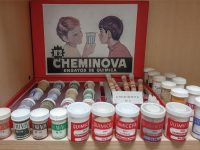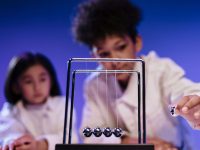|
Esperanza García Molina, also known as Pampa, is a journalist specializing in science and technology, and the vice-president of the Spanish Association of Science Communication (AECC). She has a degree in physics and works as coordinator and editor-in-chief for SINC (Information and Scientific News Service). Assuming that informing and popularizing are not the same, «what we do is locate an innovative project or research and turn it into a news item so it gets to national media», Pampa pointed out. That is why SINC content is created under a Creative Commons 3.0 licence, which means that they can be used as long as SINC is referred to as source. SINC has grown 145% in website traffic since 2011, and has an estimated audience of five and a half million people around the world.
Let’s talk about the role of news agencies in science communication. Can they influence the set up of news agenda, taking into account their role as news providers?
The potential influence is obvious: whatever a news agency delivers, it will reach the media. Many research centres know that if SINC develops the information they create and spreads it through the web, it will reach far beyond a press release sent directly to journalists’ mail addresses. The media trusts an information more if it comes from a consolidated agency with a reputation for rigour of information. For instance, there was this recent case concerning the Diagnostic and Statistical Manual of Mental Disorders (DSM). The fifth version was recently published in the United States. In Spain, it had not been addressed, but SINC made a deep analysis and information in Spanish started to appear. The fact is we have a responsibility towards society, because we constantly select what we consider needs to be told about science and research.
Do you think we need a middleman between scientists and journalists?
What we need is for it to be done right. Nowadays, science will one way or another end up in the media, told by specialized or non-specialized journalists, because research centres have already accepted that they need to explain what they do to the public, and they have specific people prepared for that. But if the media do not have prepared and educated professionals to deal with science, their interpretation will not be effective and will be published any which way.
In regard to this, you have a degree in physics. Do you believe science education is essential for a journalist working with these topics?
Not at all, I think that is just a myth. What do you need to be a science journalist? You need to know how to tell a story, and you need to be patient, curious, eager to learn about such complex topics. But you have to talk about it even if you do not understand it. Furthermore, science is such an extense field… What discipline should you study? It is true that in my personal case, my education helped me deal with physics information without fear. And if I do not understand it the first time, I am not frightened, I take it with a sense of humour. But the main thing for a journalist is to be curious, to be concerned with how science works.
As intermediaries in the communication between scientists, the media and the audience, is there a risk of becoming a filter that contributes to non-deliberate distortion of science facts?
We work in the most honest way we can. It is true that the selection of information is not free from opinion, but I want to believe that the treatment and interpretation of that information actually is, no matter how difficult it is to achieve it. Of course, what gets to the journalists went through the SINC filter, but professionals trust that filter, or they would not use us as a source. But still the journalist should rework the information from the agency, and make a couple of calls to check the data and put it into context.
SINC’s leitmotiv is «Science is news». When does science become part of the news phenomena?
There are different reasons, although it is very difficult for it to reach the front page unless there is something alerting society about the issue. For instance, in a situation of catastrophe: there have been famous cases such as the cucumber crisis, the horse meat problem or the Fukushima disaster. In this last case, it even gets to the front page. Great science discoveries occupied the front pages, too, stories like the Higgs boson or the arrival of Curiosity to Mars. But these stories got that coverage because of the huge communication team they had behind. On many other occasions, research becomes news because there are journalists making information accessible and understandable, and involving society.
You have claimed before that agencies specializing in science communication try to «tinker with accuracy and appeal». How does one do that?
That is one of the key problems of science journalism. You cannot expect the reader to focus when reading science information, because he is not studying and he will not be graded. So the journalist actually needs to make the article attractive. However, losing accuracy is a gigantic risk. It is difficult to balance them, it is a matter of experience, patience and dialogue between people in the office. Withouth going any further, I frequently check my headlines.
Laura Garsando. Journalist.
© Mètode 2013.
|
|
«SINC may be a filter, but professionals trust that filter, or they would not use us as a source»
«You cannot expect the reader to focus when reading science information, he is not studying»
|

 Lucía Sapiña
Lucía Sapiña




